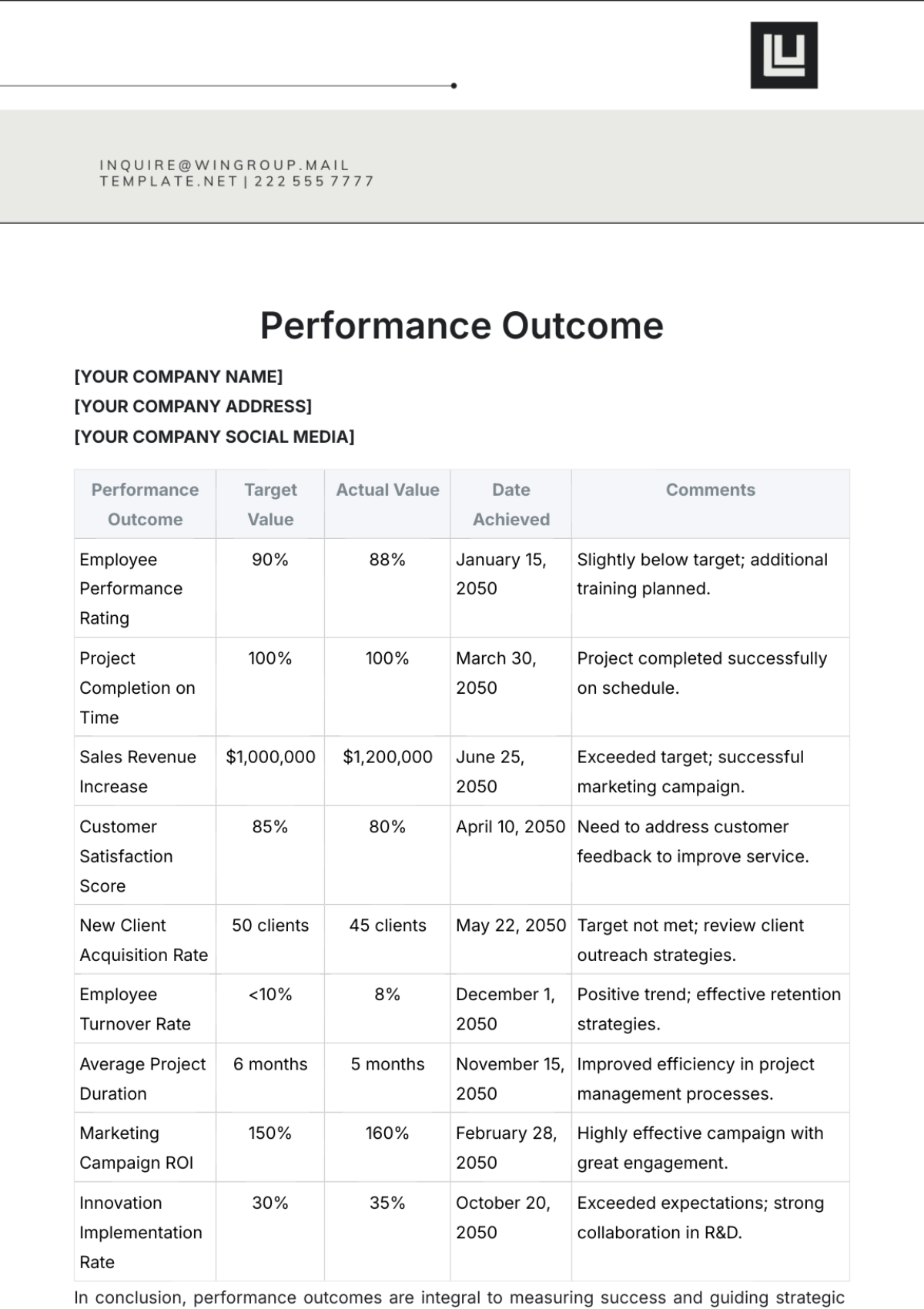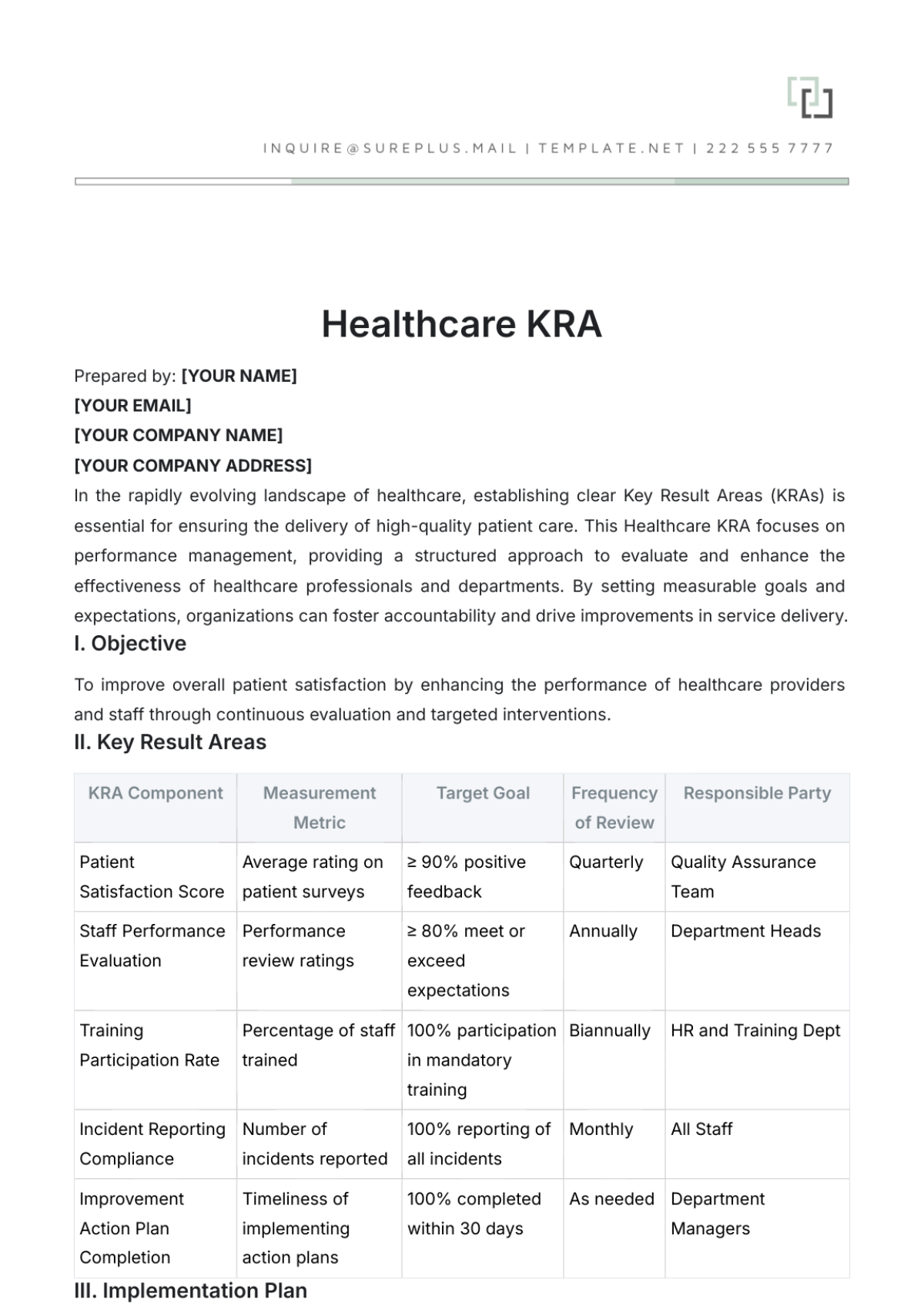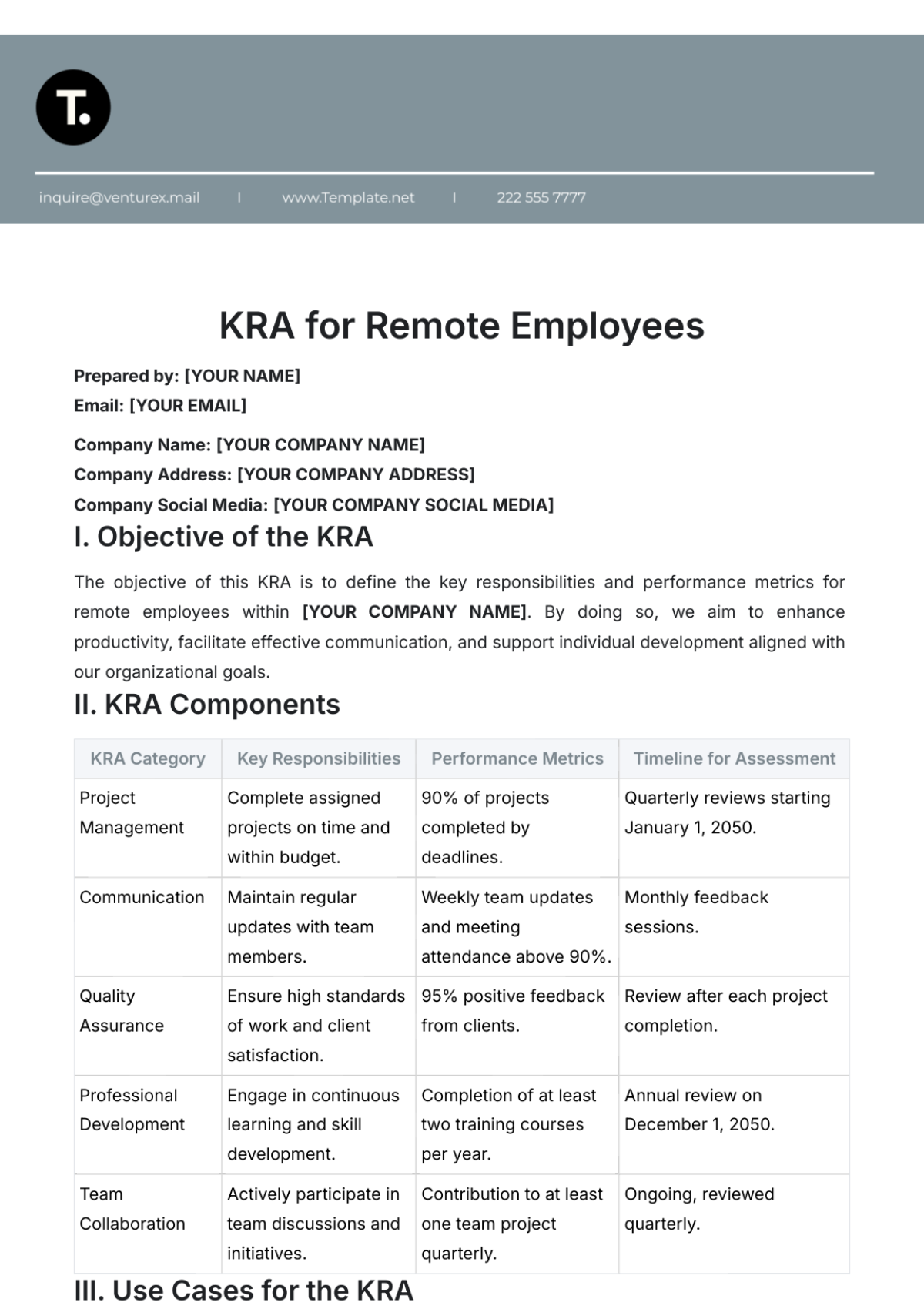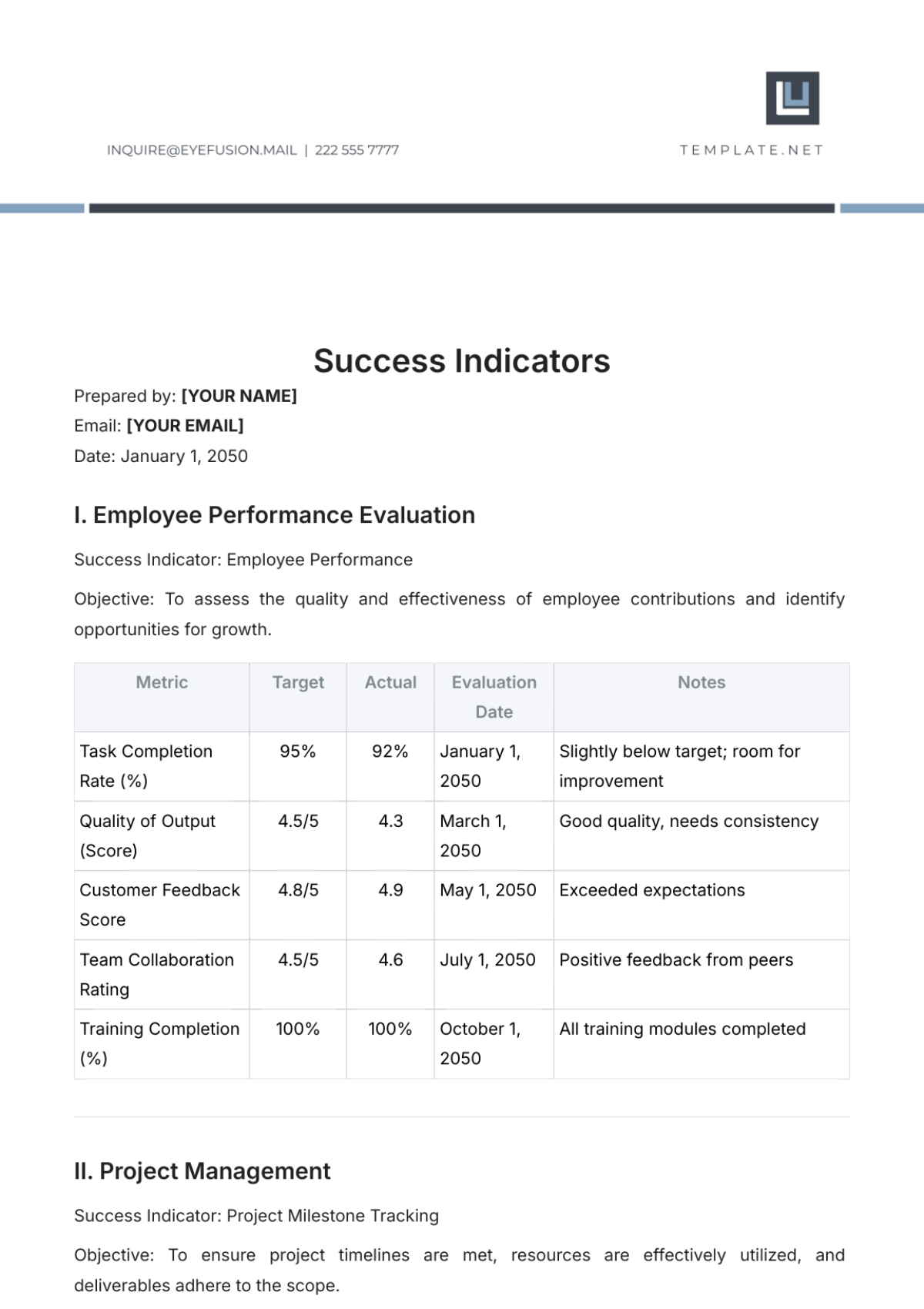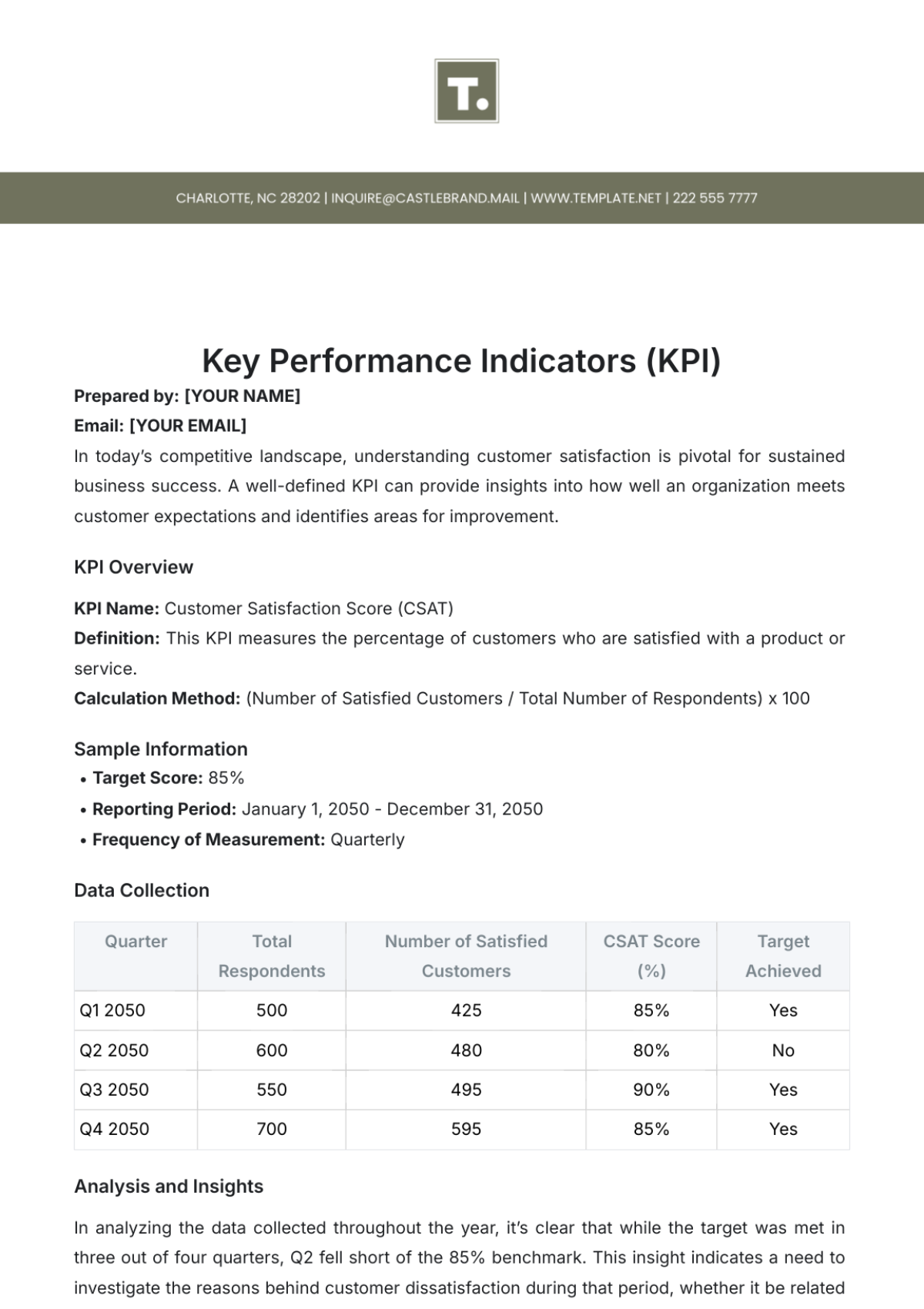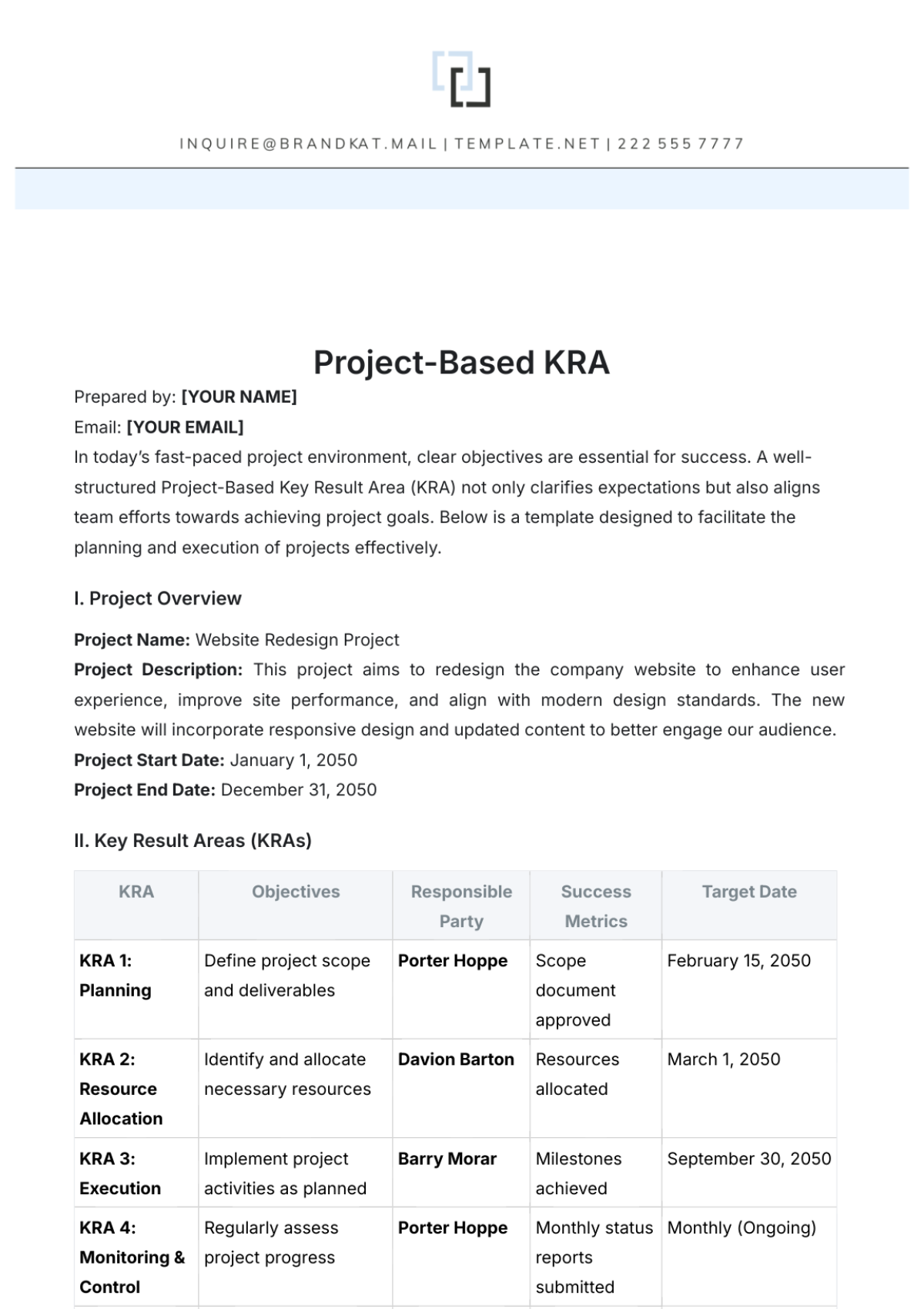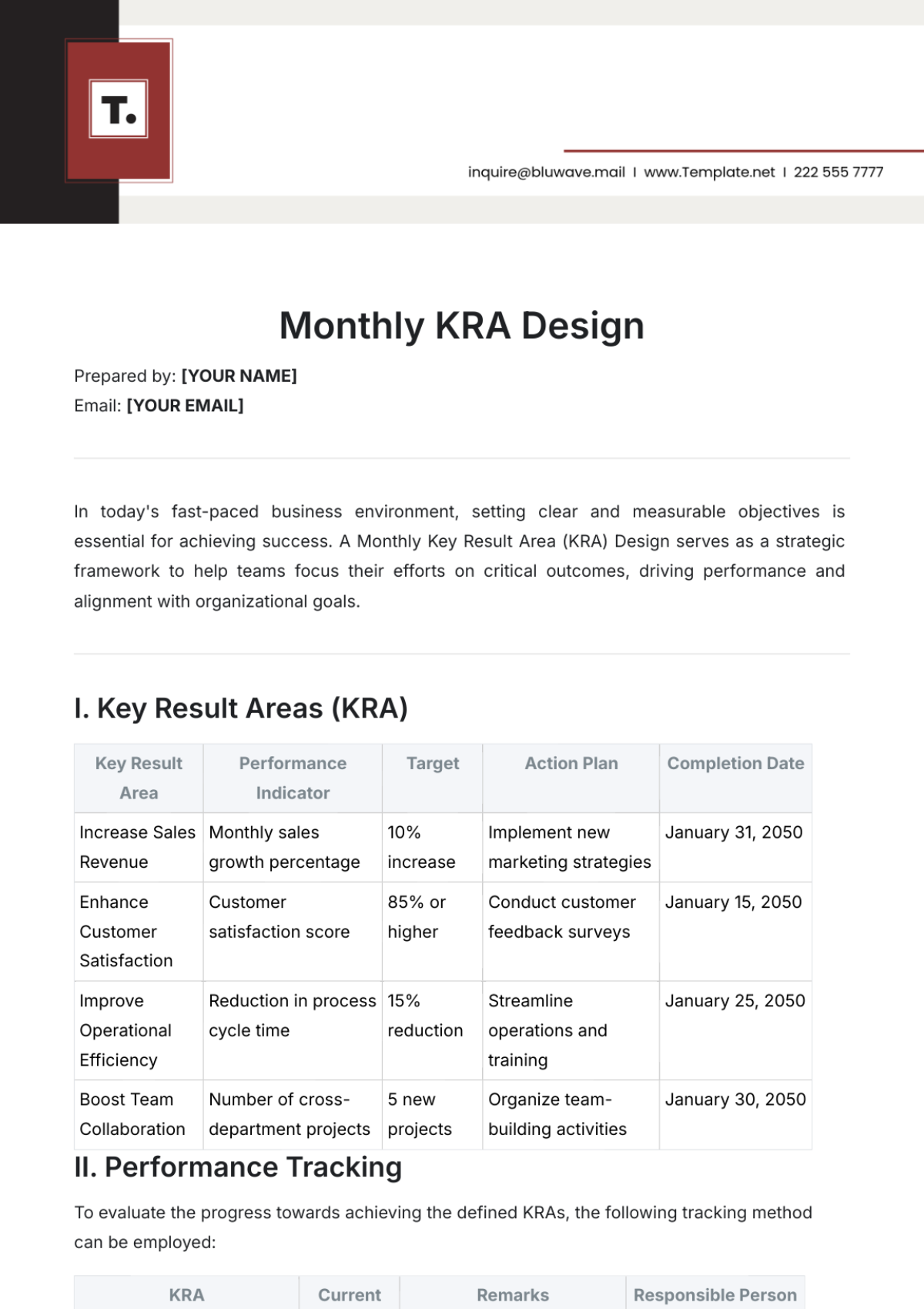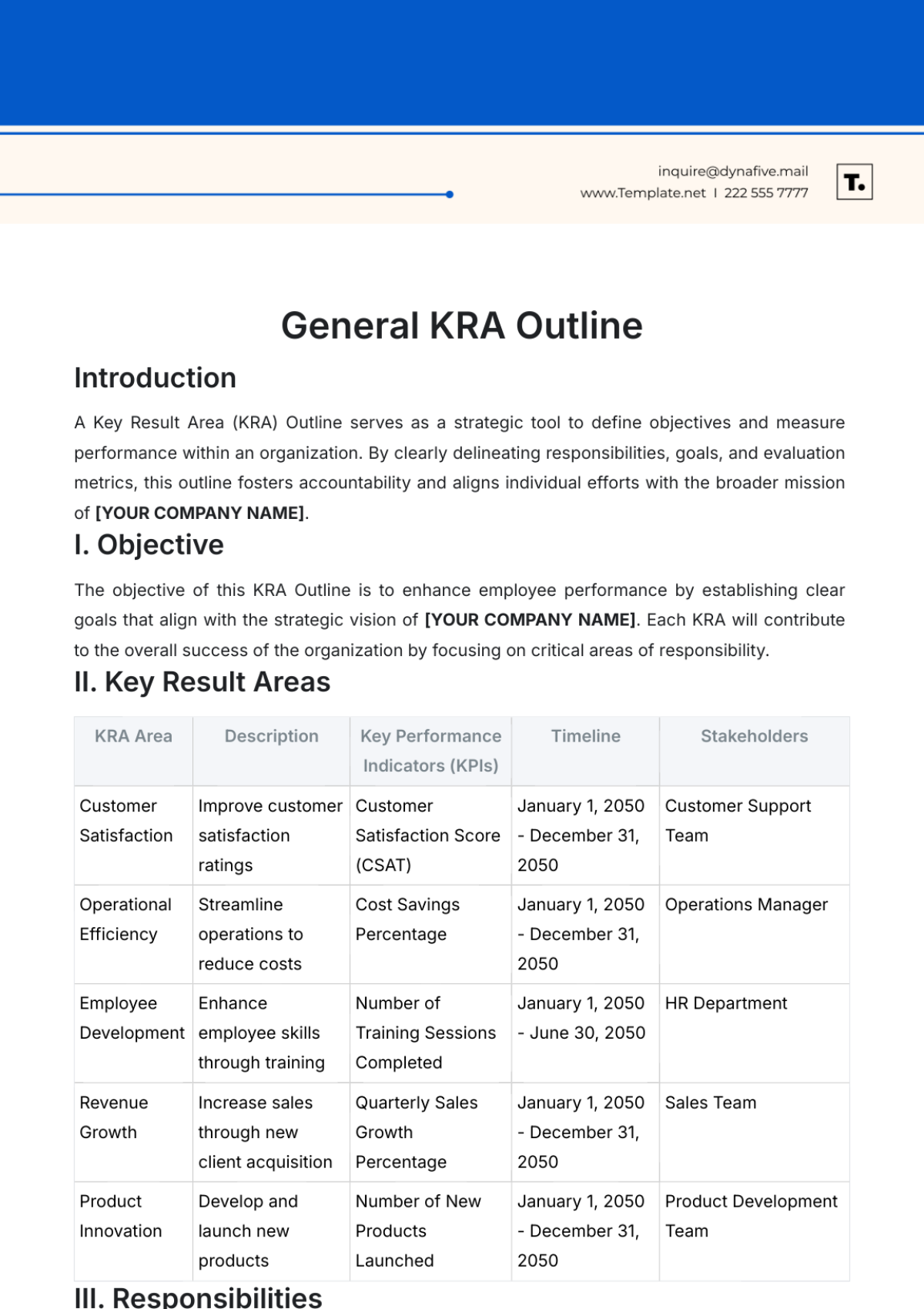Free KRA Format Template
KRA Format
This Key Result Area (KRA) document serves as a clear and strategic roadmap designed to align individual performance with our overarching organizational goals. Each Key Result Area defines the essential responsibilities and performance metrics to guide employees toward fulfilling their roles effectively. Through this structured KRA, our team members can stay focused, understand expectations, and contribute meaningfully to the organization’s success.
KRA Document Information
Prepared By: [YOUR NAME]
Contact Email: [YOUR EMAIL]
Company Name: [YOUR COMPANY NAME]
Date of Creation: February 15, 2050
Employee Information
Employee Name: Rocky Orn
Job Title: Senior Project Manager
Department: Project Management Office (PMO)
Supervisor’s Name: Maria Turner
Review Period: April 1, 2050 – March 31, 2051
Key Result Areas (KRAs)
Below are the primary Key Result Areas that define the employee's role, responsibilities, and expectations. These KRAs are designed to provide clear objectives, metrics, and expected outcomes.
KRA | Objective | Measurement Metric | Expected Outcome | Weight (%) |
|---|---|---|---|---|
Project Management | Deliver projects on time and within budget | % of projects completed on schedule/budget | 90% of projects meet delivery standards | 30% |
Client Communication | Maintain effective communication with clients | Monthly client satisfaction score (1-5) | Achieve an average rating of 4.5 or above | 20% |
Resource Allocation | Optimize team resource allocation for project needs | Resource utilization rate (%) | At least 85% utilization rate | 15% |
Risk Management | Identify and mitigate project risks proactively | % of risks mitigated in the early project stages | 80% early risk mitigation | 20% |
Training & Development | Develop team skills in alignment with project needs | Number of training sessions per quarter | Conduct 2 training sessions per quarter | 15% |
Objectives and Responsibilities by KRA
Each KRA has specified objectives, responsibilities, and measurable outcomes, ensuring performance aligns with organizational goals. Employees are encouraged to focus on the metrics outlined below to meet or exceed expectations.
KRA 1: Project Management
Objective: To ensure all assigned projects are completed on time and within the set budget.
Responsibilities: Plan, oversee, and execute projects effectively. Manage project timelines, budget allocations, and team resources.
Measurement Metric: Percentage of projects meeting timelines and budget expectations.
Expected Outcome: Successful completion of at least 90% of projects as per the project guidelines.
KRA 2: Client Communication
Objective: To maintain consistent and transparent communication with clients to ensure satisfaction and trust.
Responsibilities: Serve as the primary point of contact for clients, address concerns promptly, and provide regular project updates.
Measurement Metric: Average monthly client satisfaction score based on a 5-point scale.
Expected Outcome: Achieve an average client satisfaction rating of 4.5 or above throughout the review period.
KRA 3: Resource Allocation
Objective: To effectively allocate and utilize resources to meet project demands efficiently.
Responsibilities: Assess team strengths, assign tasks based on skill levels, and monitor workload to avoid bottlenecks.
Measurement Metric: Team resource utilization rate measured as a percentage.
Expected Outcome: Maintain a resource utilization rate of at least 85% across all projects.
KRA 4: Risk Management
Objective: To identify potential risks early in the project lifecycle and implement strategies to mitigate them.
Responsibilities: Conduct risk assessments, develop risk mitigation plans, and adjust project plans as necessary.
Measurement Metric: Percentage of risks mitigated within the initial stages of each project.
Expected Outcome: Achieve a minimum of 80% early-stage risk mitigation across all projects.
KRA 5: Training & Development
Objective: To enhance the skill sets of team members and ensure continuous professional development.
Responsibilities: Identify skill gaps, organize training sessions, and encourage team participation in professional development activities.
Measurement Metric: Number of training sessions conducted per quarter.
Expected Outcome: Conduct at least two training sessions per quarter for skill advancement.
Conclusion
This KRA document provides a clear and structured approach to achieving performance excellence. By focusing on measurable goals and clearly defined responsibilities, employees can make meaningful contributions that align with the company’s mission and vision. This KRA format not only enables effective performance evaluation but also supports the employee’s growth and development in their role.

